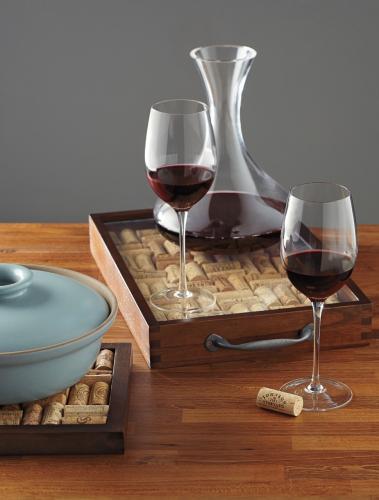What is Acidity in Wine?

Acidity is one of the basic components of wine, it’s a key player in the flavour profile, structure and overall balance. Whether you’re sipping on a crisp white or a full-bodied red, acidity is what makes wine refreshing, it’s an essential element in the enjoyment and versatility of your favourite bottles. But what is acidity in wine and how does it affect you? In this article, we’ll break down the concept of acidity in wine, its forms and why it’s important for white wine and red wine. Plus we’ll give you tips on how to pick the perfect wine with just the right amount of acidity and how you can shop for wine from trusted sources like Bottle Barn, an online wine store.
What is Acidity in Wine?
Acidity in wine is the tart feeling you get when you taste wine. It’s a structural component that affects the taste, freshness and aging of wine. Acids in wine come from the grapes themselves and various factors such as grape variety, climate and winemaking techniques all affect the acidity level of the final product.
The three types of acids in wine are:
- Tartaric Acid – This provides stability and structure.
- Malic Acid – This is the sharp green apple flavour, especially in younger wines.
- Citric Acid – Is a lemony taste, less common than tartaric and malic acids.
Acidity is more noticeable in white wines which are more acidic than reds. But even full-bodied reds need acidity to not feel too heavy or cloying. In both, the right amount of acidity keeps the wine lively and refreshing.
How Acidity Affects Wine Taste
Acidity in wine affects the taste. High acidity in white wine will present itself as crisp and zesty with flavours of lemon, lime or green apple. High-acid white wines are super refreshing also versatile and pair well with a wide range of food from seafood to salads.
In red wine, acidity plays as a balancing act against the tannins and richness of the wine. High-acid reds will have bright juicy flavours of cherry or cranberry and will feel lighter on the palate. Low acid reds will be rounder and fuller but if the acidity is too low the wine will feel flat or heavy on the palate.
Wines with the right amount of acidity taste balanced, fresh and lively. Acidity can also help the wine pair with food as it cuts through fatty or rich food making each bite more enjoyable.
High vs. Low Acidity Wines: What’s the difference?
Not all wines have the same acidity. In fact different styles of wine will vary greatly in acidity depending on the grape variety and climate. Here’s a quick rundown of the acidity levels between wine types:
- High-Acidity White Wines: Crisp and refreshing with citrus or green fruit flavours. Examples include Sauvignon Blanc, Albariño and Riesling.
- Low-Acidity White Wines: Softer and rounder with more ripe fruit flavours like peach, melon or tropical fruits. Chardonnay especially when oaked can fall into this category.
- High-Acidity Red Wines: Wines like Pinot Noir, Sangiovese and Barbera have high acidity which makes them feel lighter and more refreshing. These wines are great for food pairing as their acidity cuts through rich food like pasta with tomato sauce or grilled meats.
- Low-Acidity Red Wines: Cabernet Sauvignon, Merlot and Syrah tend to have lower acidity and feel full-bodied and smooth on the palate. These wines can be rich and robust but you need enough acidity to balance out the tannins and alcohol.
Why Acidity is Important in Wine
Acidity is important for several reasons both in taste and overall quality of the wine:
- Balance – A wine with not enough acidity will taste flat and too sweet. Acidity balances out the sweetness, fruitiness or tannic structure of the wine making it more drinkable.
- Freshness – Acidity gives the wine its refreshing quality. That’s why a chilled glass of Sauvignon Blanc tastes so crisp on a hot day or why a vibrant red like Chianti pairs so well with pizza.
- Aging Potential – Wines with higher acidity will age better. The acidity preserves the wine’s freshness and structure over time and allows it to develop more complex flavours as it ages in the bottle.
- Food Pairing – Acidity helps the wine to pair with food. Wines with higher acidity can cut through fatty food like creamy cheeses or rich meats making the meal more balanced and enjoyable.
Choosing the Right Wine with Acidity in Mind
When choosing a wine it’s helpful to think about how much acidity you like. If you like bright and zesty flavors you’ll probably prefer high-acid wines like Sauvignon Blanc, Albariño or Pinot Noir. If you prefer wines that are softer and rounder you might prefer lower-acid wines like Chardonnay or Merlot.
One of the best ways to try different acidity levels is to try different wines from a trusted source. Bottle Barn is an online wine store that offers a wide range of white wine and red wine bottles so you can experiment with different styles and find what suits your taste.
Buying Wine with the Right Acidity Online
Buying wine online is a convenient way to try new wines and flavours without leaving your home. At Bottle Barn you can browse through a huge selection of wines from crisp high-acid Sauvignon Blancs to fuller lower-acid reds like Merlot and Cabernet Sauvignon.
Whether you’re looking for a crisp white wine bottle to enjoy on a sunny day or a balanced red wine bottle to pair with dinner, Bottle Barn has you covered. Their website is easy to use and their delivery service means your favourite wines are just a click away.
Conclusion
Understanding acidity in wine is key to enjoying how different wines taste and pair with food. From the zippy freshness of a Sauvignon Blanc to the balanced complexity of a rich red, acidity is important in the overall drinking experience. Next time you buy a wine whether it’s a white wine or red wine think about the acidity and how it will enhance your enjoyment. And remember you can try a wide range of wines with the right acidity at Bottle Barn, your online wine store for quality wines delivered to your door.




Comments